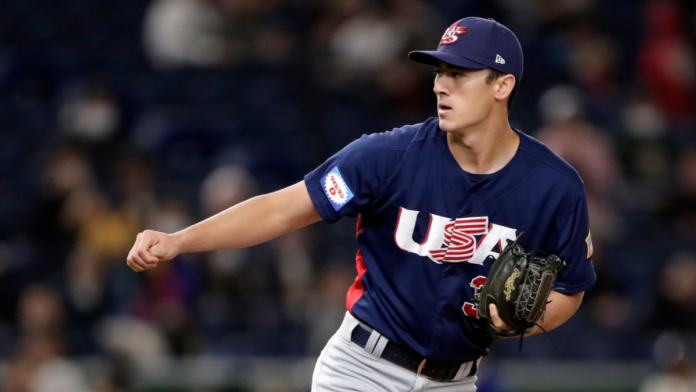Major League Baseball’s Winter Meetings culminated on Wednesday evening with the return of the Rule 5 Draft.
For those who are unaware of the whole thing, the Rule 5 Draft is a mechanism that protects against talent hoarding. Teams have only so many years after signing a player before they have to add them to their 40-player roster; if they fail to do so, the player can then be selected by another club in the Rule 5 Draft for a small cost.
There are some other wrinkles to the process, of course. Teams have four years for players who signed at age 19 or later, and five years for players who signed younger. Additionally, the selecting teams have to keep those players on their own active rosters for the entirety of a big-league season. Otherwise, they have to offer the player back to their original team; if said team declines, the player is exposed to waivers. (There’s also a minor-league portion of the Rule 5 Draft, but that’s another matter.)
Last year’s event was first delayed and then later canceled because of the owner-imposed lockout, meaning that Wednesday’s Rule 5 Draft was the first since the winter of 2020. That just so happened to be a relatively eventful Rule 5 Draft, as it saw the Boston Red Sox land Garrett Whitlock and the Cleveland Guardians nab Trevor Stephan, both from the New York Yankees farm system.
So, what happened in the 2022 Rule 5 Draft? Here is a full list of results, as well as four things worth knowing.
1. Ward goes No. 1
The Nationals used the first pick of the draft to take right-hander Thad Ward, formerly of the Red Sox system. Ward was one of 10 players CBS Sports highlighted ahead of the event, writing the following:
It wasn’t too long ago that Ward looked like a quick-moving, back-of-the-rotation starter. Alas, he’s missed most of the last two seasons undergoing and then recovering from Tommy John surgery. Ward did make 17 combined appearances between the regular season and Arizona Fall League, in which he showed off his broad, if not necessarily loud, arsenal. A team could pluck Ward and use him in a multi-inning relief role before later reintroducing him to the rotation.
Given the current nature of the Nationals’ rebuild, it seems possible (if not downright probable) that Ward will get a long look as part of their bullpen.
2. Dodgers, Red Sox, Yankees, Guardians raided
Ward wasn’t the only member of the Red Sox organization to be selected.
Boston could also lose right-handers Andrew Politi to the Orioles and Noah Song to the Phillies. (Skip down to the next subhead for more on Song and his unusual situation.) That ties them with the Dodgers for the most players picked.
Los Angeles, for its part, stands to lose first baseman Ryan Noda to the Athletics; lefty Jose Hernandez to the Pirates; and righty Gus Varland to the Brewers. Of course, the odds of the Red Sox or Dodgers losing all three of their players are slim to none.
The Guardians (righty Kevin Kelly to the Rockies; fellow righty Nic Enright to the Marlins) and the Yankees (righty Wilkin Rodriguez to the Cardinals; fellow righty Zach Greene to the Mets) were the other clubs who had multiple players taken in this draft.
3. Phillies take Song
Arguably the most intriguing selection of the day belonged to the Phillies, who picked Red Sox right-hander Noah Song at No. 20.
Song, originally a fourth-round pick, was a first-round-quality prospect who slipped because of the uncertainty surrounding his availability. To wit, he has not pitched professionally since 2019 because of his commitment to the United States Naval Academy. He completed his commitment earlier this year and applied for a waiver that would allow him to resume his baseball career, but his status remains unclear.
It is worth noting that the Phillies have already placed Song on the military list. As such, he won’t count against their 40-player limit, and they won’t have to worry about housing him on the active roster, either. In essence, the Phillies have gained Song’s rights for the duration of his absence, and perhaps beyond that. His service time clock won’t start until he’s active.
4. No team takes multiple players
While there were 15 players selected in total in the major league portion of the Rule 5 draft, they were each chosen by different teams. That means two things: one, half the league passed on the opportunity to take a single player; and two, the entire league passed on taking multiple players. It’s fairly commonplace to see one or two squads select a couple of players — the Orioles and Athletics both did it in 2020 — just not, evidently, this year.


